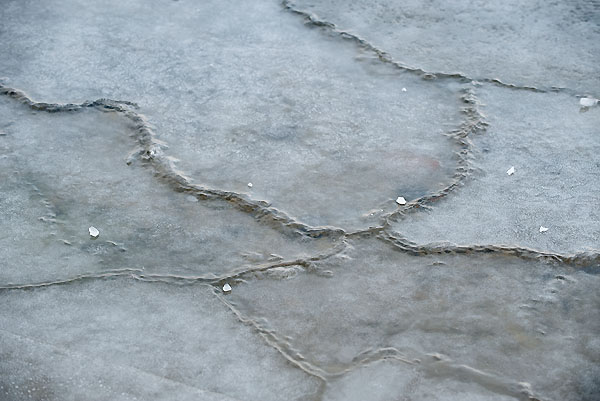December ice

Lake ice fractures
Photo: Jeff Miller. UW-Madison, University Communications, © Board of Regents of the University of Wisconsin System
Here is a Phenological phenomena news flash: ice is forming on lakes and rivers. You heard it here first. So, how fast does ice form? Once the first layer of ice forms on a lake, the rate of growth is primarily dependent on the air temperature, but wind and the presence or absence of snow on the existing ice layer also impact its development. If there is currently 1/2 of ice, the ice will grow at a rate of approximately 1 inch per 15 freezing degree days (FDD). FDDs are the average number of degrees below freezing over a 24 hour period. Ice actually forms faster when there is a breeze, at least for ice less than 3 thick. In order for ice to grow thicker, it must dissipate 80 calories per gram of water. The moving air helps to dissipate the heat. Once the ice is over 3 thick, wind is less of a factor. Conduction is then the most important factor. Please remember that ice is never 100% safe.
To learn more about ice and its formation, visit lakeice.squarespace.com/ice-formation.
The Minnesota Department of Natural Resources also has some very good resources on ice safety.